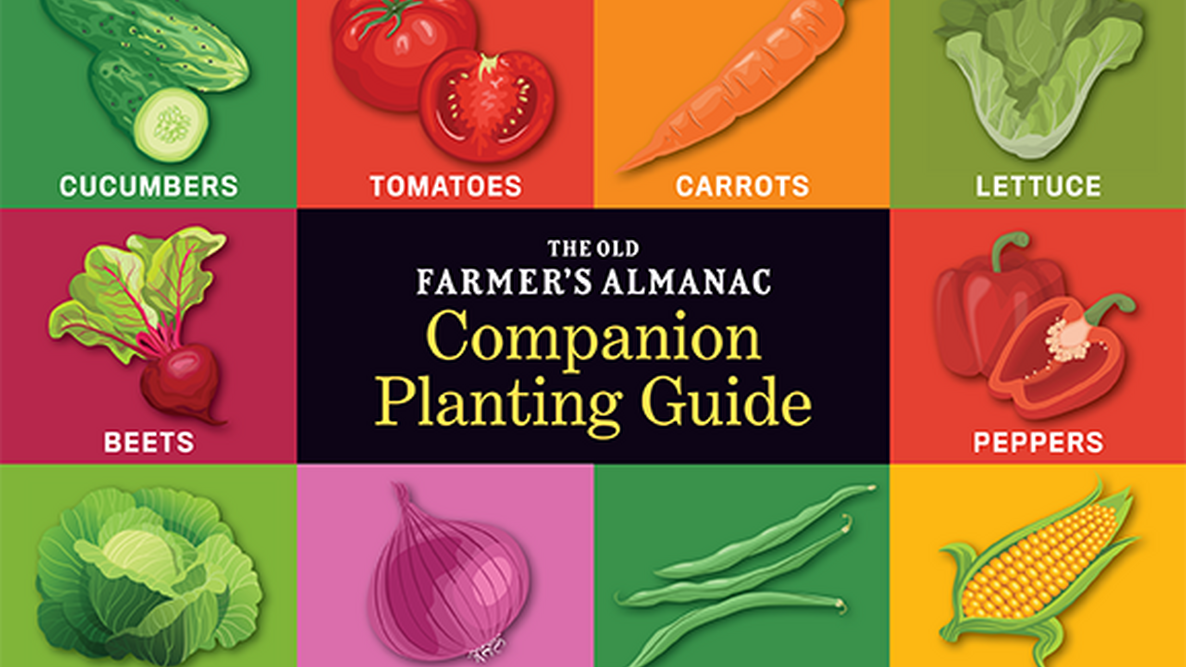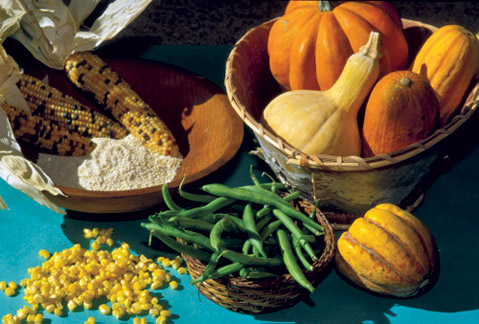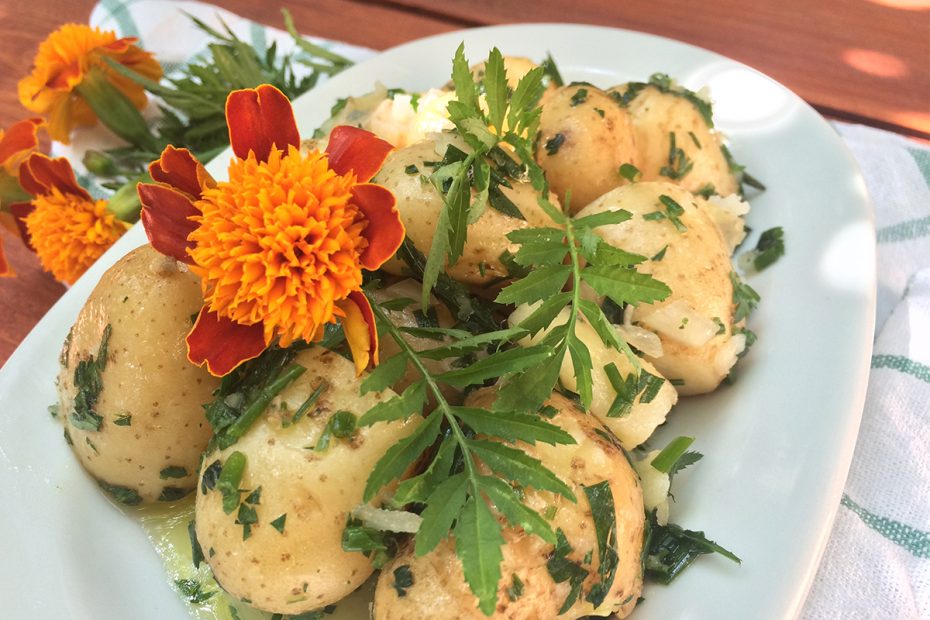Vegetables That Grow Together Like A Dream
Vegetables That Grow Together Like a Dream
Growing your own vegetables is a great way to save money, eat healthier, and enjoy the satisfaction of harvesting your own food. But if you're new to gardening, it can be a bit daunting to know where to start.
One way to make gardening easier is to practice companion planting. Companion planting is the practice of planting certain types of vegetables together because they benefit each other in some way. For example, some plants attract beneficial insects that help to control pests, while others help to improve the soil or deter pests.
There are many different companion planting combinations, but here are a few of the most popular:
- Beans and corn: Beans fix nitrogen in the soil, which is beneficial for corn. Corn provides shade for beans, which helps to protect them from the sun.

- Carrots and onions: Carrots and onions repel each other's pests, so they can be planted together to help keep each other healthy.

- Cucumbers and tomatoes: Cucumbers and tomatoes attract different pests, so they can be planted together to help keep each other pest-free.
- Lettuce and spinach: Lettuce and spinach grow well together because they have similar water and nutrient needs.

- Peas and marigolds: Peas attract beneficial insects that help to control pests, while marigolds deter pests.

These are just a few of the many different companion planting combinations that you can try. When choosing companion plants, it's important to consider the plants' needs and how they will benefit each other. With a little planning, you can create a thriving vegetable garden that is both productive and beautiful.
[MAIN CONTENT]
In addition to the companion planting combinations listed above, here are a few more tips for growing vegetables together:
- Plant tall plants in the back of the garden and shorter plants in the front. This will help to create a layered effect that will make your garden look more interesting and provide some shade for the shorter plants.
- Plant plants with similar water and nutrient needs together. This will help to ensure that all of your plants are getting the resources they need to thrive.
- Avoid planting plants that attract the same pests together. This could make it more difficult to control pests in your garden.
- Experiment with different companion planting combinations. There is no one-size-fits-all approach to companion planting, so it's important to experiment to find what works best for your garden.
With a little planning and experimentation, you can create a thriving vegetable garden that is both productive and beautiful.
[CONCLUSION]
Companion planting is a great way to improve the health and productivity of your vegetable garden. By planting certain types of vegetables together, you can help to attract beneficial insects, deter pests, improve the soil, and more.
If you're new to gardening, companion planting can seem a bit daunting at first. But with a little research, you'll be able to find the perfect companion planting combinations for your garden. And once you start seeing the benefits of companion planting, you'll wonder why you didn't start sooner!
Are you looking for some delicious and easy-to-grow vegetables to plant in your garden? If so, you might want to consider planting the Three Sisters. This traditional Native American planting method involves planting corn, beans, and squash together. These three plants complement each other in many ways, and they can help to improve the health of your soil.
Corn provides a sturdy support for the bean vines to climb, and the beans fix nitrogen in the soil, which benefits the corn. The squash helps to suppress weeds and retain moisture in the soil. As a result, the Three Sisters can help you to grow a healthy and productive garden with minimal effort.
If you're interested in learning more about the Three Sisters, or if you're looking for other vegetable combinations that grow well together, I recommend visiting Gardenia Inspiration. This website has a wealth of information on companion planting, and it can help you to choose the right vegetables for your garden.
FAQ of 3 vegetables to grow together
Question 1: What are 3 vegetables that grow well together?
Answer: There are many different vegetables that can be grown together, but some of the most popular combinations include:
- Tomatoes and basil: Basil repels aphids and other pests that can damage tomatoes. It also helps to improve the flavor of tomatoes.
- Beans and corn: Beans fix nitrogen in the soil, which is beneficial for corn. Corn provides shade for beans, which helps to prevent them from getting too hot.
- Carrots and onions: Carrots and onions have different rooting depths, so they don't compete for nutrients. They also help to repel each other's pests.
- Lettuce and spinach: Lettuce and spinach are both cool-season vegetables that can be planted early in the season. They also have similar nutrient requirements.
- Peas and cucumbers: Peas and cucumbers both need full sun and well-drained soil. They also have similar watering needs.
Question 2: What are the benefits of companion planting?
Answer: There are many benefits to companion planting, including:
- Reduced pest pressure: Companion plants can help to repel pests and attract beneficial insects.
- Improved pollination: Some companion plants can help to improve pollination, which can lead to increased yields.
- Enhanced nutrient cycling: Some companion plants can help to improve nutrient cycling in the soil, which can benefit all of the plants in the garden.
- Diversified crop rotation: Companion planting can help to diversify crop rotation, which can help to prevent soil-borne diseases.
Question 3: What are some things to consider when choosing vegetables to grow together?
Answer: When choosing vegetables to grow together, there are a few things to consider:
- Planting depth: Make sure that the vegetables you choose have similar planting depths. This will help to prevent them from competing for resources.
- Nutrient requirements: Make sure that the vegetables you choose have similar nutrient requirements. This will help to ensure that they are both getting the nutrients they need.
- Watering needs: Make sure that the vegetables you choose have similar watering needs. This will help to prevent one plant from getting too much water while the other plant is getting too little.
- Pest and disease resistance: Choose vegetables that are resistant to the same pests and diseases. This will help to reduce the amount of pest and disease control you need to do.
Question 4: Where can I find more information about companion planting?
Answer: There are many resources available to help you learn more about companion planting. Here are a few suggestions:
- The Companion Planting Chart: This chart from the Old Farmer's Almanac lists which vegetables and flowers to pair together in a bed.
- The Companion Planting Handbook: This book by Louise Riotte provides in-depth information about companion planting.
- The Vegetable Gardener's Companion: This book by Barbara Damrosch offers practical advice on companion planting for vegetable gardens.
- The Garden Bloggers' Compendium of Companion Planting: This website provides a comprehensive list of companion planting combinations from garden bloggers around the world.
Question 5: What are some common mistakes to avoid when companion planting?
Answer: Here are a few common mistakes to avoid when companion planting:
- Planting incompatible vegetables together: Some vegetables simply don't get along well together. Make sure to do your research before planting any two vegetables together.
- Planting too many vegetables together: If you plant too many vegetables together, they may compete for resources and not thrive.
- Not considering the size of the vegetables: Some vegetables grow much larger than others. Make sure to leave enough space between plants so that they have room to grow.
- Not considering the sunlight requirements: Some vegetables need full sun, while others prefer partial shade. Make sure to choose vegetables that have similar sunlight requirements.
Image of 3 vegetables to grow together
- Carrots, onions, and lettuce: These vegetables all have different growing requirements, so they won't compete for resources. Carrots need full sun, onions prefer partial shade, and lettuce can tolerate both. They also help each other out by repelling pests.

- Beans, corn, and squash: This is a classic trio of companion plants. Beans fix nitrogen in the soil, which benefits the corn. The corn provides support for the beans, and the squash shades the soil, which helps keep it moist.

- Peas, tomatoes, and basil: These vegetables are all attractive and easy to grow. Peas and tomatoes benefit from the support of the basil, and basil helps to deter pests from the tomatoes.
- Potatoes, marigolds, and chives: Potatoes attract harmful nematodes, but marigolds repel them. Chives help to keep the soil loose and aerated, which benefits the potatoes.

- Cucumbers, beans, and melons: These vegetables all like warm weather and plenty of sun. They also benefit from having something to climb on, so they can be planted together to save space.

Post a Comment for " Vegetables That Grow Together Like A Dream"